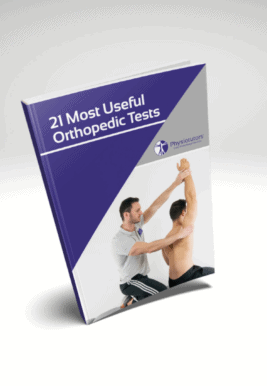Learn
Standing Bent Over Test | Vorlauf Test | SIJ Dysfunction Assessment
The Standing Bent Over Test is also known under the names of Vorlauf Test or Standing Flexion Test to assess for sacroiliac joint dysfunction.
Like many other palpation tests, the Standing Bent Over Test has a low reliability and low validity with a sensitivity of 17% and a specificity of 79% according to Levangie et al. (1999).
On top of that, Riddle et al. (2002) found a low inter-rater reliability of k = 0.32. Therefore the value of this test is weak.
To perform the test, have your patient stand and palpate both PSIS. Then ask your patient to bend forward towards the midline while you evaluate whether the movement of both PSISs are symmetrical or asymmetrical.
The test is positive on the side where the PSIS moves further cranially. The reason for this is that in a hypomobility, you will have less nutation between the sacrum and the ilium and therefore the ilium including the PSIS on the hypomobile side will have to move earlier.
In a normal joint, you will expect counternutation at around 60° of flexion, so from that point on the PSIS will usually start to travel upwards.
Other orthopedic tests for SIJ dysfunction are:
- Shimpi Prone SI Joint Test
- Gillet / Marching / Sacral Fixation Test
- Sacroiliac joint Nutation
- Sacroiliac joint Counternutation
Due to the low reliability of SIJ dysfunction test, we advise leaving them behind and only focusing on SIJ provocation tests like the cluster of Laslett.
21 OF THE MOST USEFUL ORTHOPAEDIC TESTS IN CLINICAL PRACTICE

References
Like what you’re learning?
BUY THE FULL PHYSIOTUTORS ASSESSMENT BOOK
- 600+ Pages e-Book
- Interactive Content (Direct Video Demonstration, PubMed articles)
- Statistical Values for all Special Tests from the latest research
- Available in 🇬🇧 🇩🇪 🇫🇷 🇪🇸 🇮🇹 🇵🇹 🇹🇷
- And much more!








